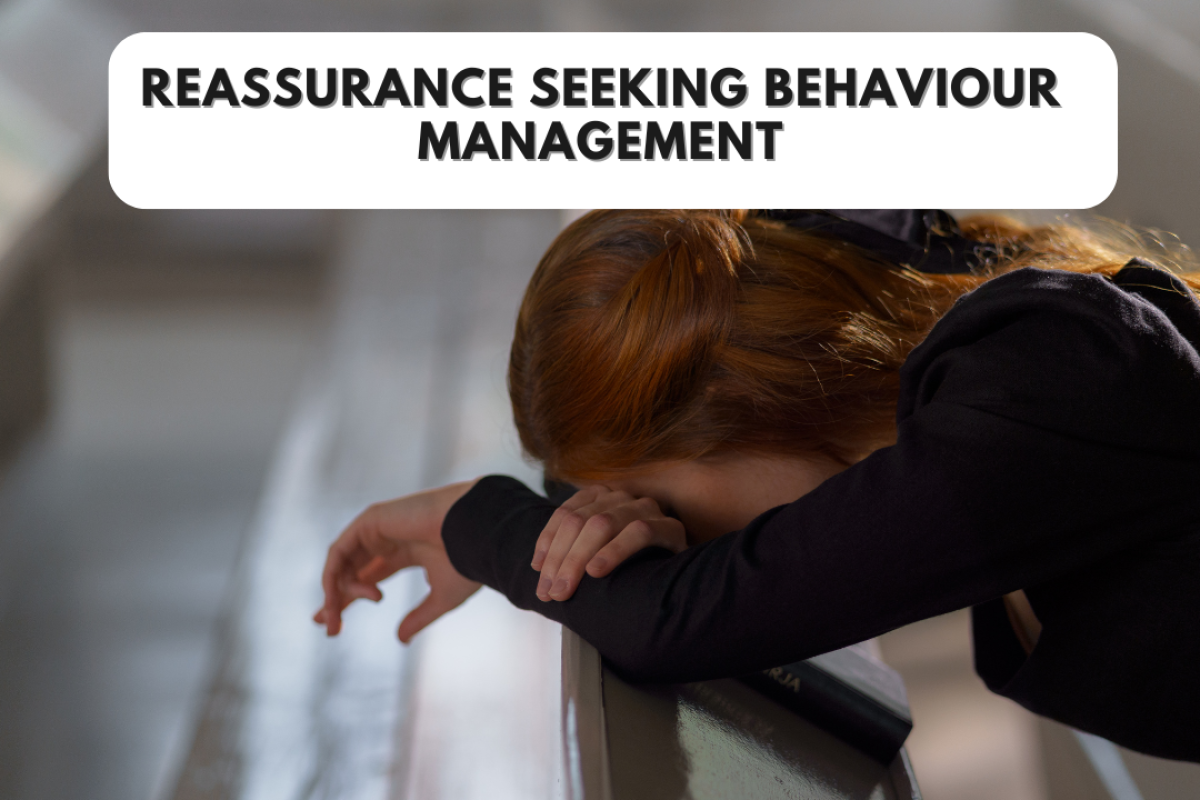Reassurance Seeking Behavior Management in OCD
In today’s world, you might often hear people saying that they have OCD, referring to the mere need of keeping things organized. However, it is much deeper than that. Obsessive-Compulsive Disorder is a mental health condition in which one experiences continuous intrusive thoughts, known as obsessions. As a result of these obsessions, an individual performs compensatory repetitive behaviors referred to as compulsions. Seeking reassurance is a common pattern seen in OCD as it momentarily helps in controlling distress.
Although reassurance seeking can occur by itself, it’s a major characteristic observed in people with OCD. This article explores different techniques that can be helpful in effectively managing this kind of behavior.
Understanding Reassurance Seeking Behavior
A major symptom seen in OCD is the feeling of anxiety and distress. Reassurance seeking behavior acts as that safety mechanism that provides momentary relief from uncertainty. However, it lasts only for a short time, making an individual seek reassurance again and again in order to escape any lingering sense of threat. Reassurance becomes a means of reinforcement in one’s life. Thus, this kind of behavior is excessive in people with OCD.
Why Should It Be Controlled?
Reassurance is a positive and supportive act. However, when present in excess, it can be counterproductive. With OCD, the need for reassurance increases constantly. This turns into a vicious cycle, as constant uncertainty leads to a more severe dependence on reassurance. Moreover, such behavior might be difficult to accept for family and friends. The constant need to provide reassurance can be exhausting, and might not even make sense at times. As a result, interpersonal relationships can experience strain, and emotional distance can be created.
Managing Reassurance Seeking Behavior
While it can be hard, it is not impossible to manage the need to seek reassurance as a person with OCD. Below are some effective strategies to manage reassurance seeking behavior in oneself:
- Acknowledge the Need for Reassurance: The first step is awareness. Reflect on how often you need reassurance and identify situations where this need arises most frequently.
- Recognize Irrational Thoughts: With OCD, it can be hard to differentiate between rational and irrational fears. Before seeking reassurance, ask yourself if you already know the answer. Challenge the irrational thoughts that fuel the need for reassurance.
- Know That Uncertainty is Okay: It’s impossible to have certainty about everything in life. Remind yourself that uncertainty is a normal part of life. Use relaxation or grounding techniques to manage the discomfort that comes with it.
- Work with People You Love: Explain to your loved ones why you seek reassurance and how they can help. Ask them to gently point it out when you seek reassurance and to avoid feeding the cycle by repeatedly reassuring you.
- Don’t Be Hard on Yourself: Avoid self-criticism. Progress takes time. Try delaying reassurance-seeking gradually rather than stopping all at once. Practice patience and self-compassion throughout your recovery process.
Reducing Reassurance Seeking Behavior Using Therapeutic Interventions
In cases of severe OCD or uncontrollable reassurance-seeking behavior, seeking professional help is highly recommended. Mental health professionals are trained to guide individuals in breaking this pattern through structured therapy approaches. One of the most effective interventions for OCD is Exposure and Response Prevention (ERP), which is a form of Cognitive Behavioral Therapy (CBT).
Exposure and Response Prevention (ERP)
The goal of ERP is to gradually reduce the cycle of OCD by proving that the obsessive thoughts that make one feel unsafe are, in fact, not dangerous. The process involves two main steps:
- Exposure: The therapist helps the person face the situations or thoughts that trigger their obsessions in a safe, controlled manner. This exposure begins at a manageable level and is gradually increased.
- Response Prevention: The individual learns to resist performing the compulsive behaviors (such as seeking reassurance) that temporarily reduce anxiety. Over time, this helps break the association between anxiety and compulsive behavior, allowing anxiety to diminish naturally.
Conclusion
At first glance, excessive reassurance-seeking might appear to be a minor habit. However, for individuals with OCD, it can significantly impact emotional well-being and daily functioning. Reassurance-seeking reinforces the OCD cycle, creating dependence and limiting the ability to cope with uncertainty. Managing this behavior requires patience, awareness, and structured guidance.
Self-management techniques, therapy, and family support can all contribute to recovery. Joining OCD support groups can also provide encouragement and community understanding. With consistent effort, guidance from mental health professionals, and the right coping strategies, individuals can learn to manage reassurance-seeking behavior effectively—leading to a more balanced, peaceful, and fulfilling life.









